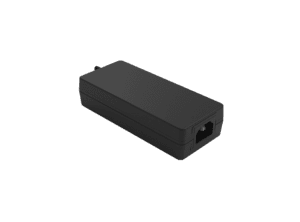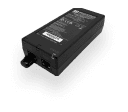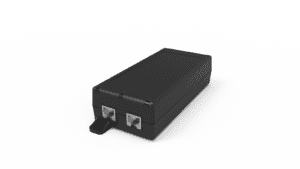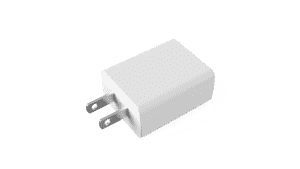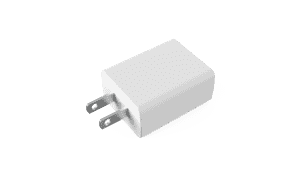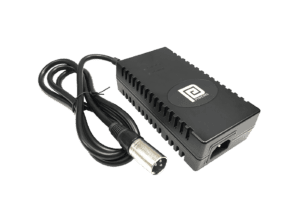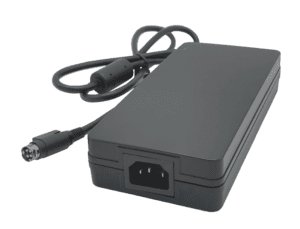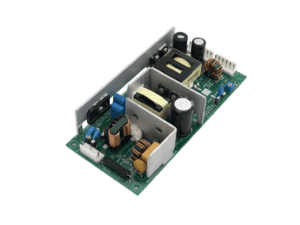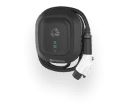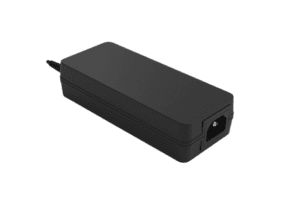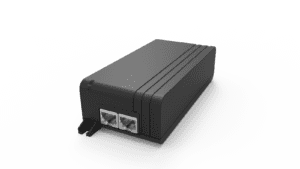BLOG
Choosing the Right PoE Injector: A Comprehensive Guide
Table of contents

Life as an IT Professional used to be a constant battle, grappling with messy installations and the perpetual hunt for available power outlets. However, everything changed with the revolutionary advent of the PoE injector. These devices offer an ingenious solution, eliminating the need for power adapters by seamlessly delivering both data and power through a single Ethernet cable. In our previous article, we discussed the basics of the PoE injector, its benefits, and unique applications. Now, let’s deepen your understanding by exploring the types of PoE injector products available, their features, and which specific PoE injector product would best suit you and your business.
What is a PoE Injector?
A PoE (Power over Ethernet) injector is a device that adds power to an Ethernet cable, allowing it to deliver both data and electrical power to PoE-compatible devices over a single cable. This eliminates the need for separate power sources for these devices, simplifying installation and reducing clutter.
Typically, a PoE injector has two main ports: one port connects to a non-PoE network switch or router (the input), while the other port connects to the PoE device, such as an IP camera, wireless access point, or VoIP phone (the output). By injecting power into the Ethernet cable, the PoE injector enables these devices to function without needing an additional power adapter, making it an efficient solution for network setups.
PoE injectors are especially useful in situations where it’s challenging to run additional power lines or where devices are located far from power outlets. They support various PoE standards, which define the power levels that can be delivered to devices, ensuring compatibility with different PoE devices in a network.
What is a PoE Splitter?
PoE splitters function differently from PoE injectors / midspans. While injectors / midspans inject both power and data through a single Ethernet cable, a PoE splitter does the opposite—it splits the power and data signals, feeding them into separate inputs. This allows non-PoE devices to use only the power, effectively functioning as a power adapter. Commonly, PoE splitters power non-PoE IP cameras, wireless access points, and VoIP phones.
PoE Standard vs Passive
What are “standards based” PoE injector devices, and how do they differ from “Passive” ones? You may encounter this terminology when shopping for PoE systems, but the distinction is relatively straightforward: Standards based PoE products adhere to Institute of Electrical and Electronics Engineers (IEEE) guidelines. These standards delineate aspects such as voltage levels, power delivery capabilities, and communication protocols between Power Sourcing Equipment (PSE) and Powered Devices (PD). The standards are as follows:
IEEE 802.3af (PoE): This standard was the first widely adopted PoE standard. It provides up to 15.4 watts of DC power to each device over Ethernet cables. It commonly powers devices such as VoIP phones, IP cameras, and access points.
IEEE 802.3at (PoE+): Also known as PoE+, this standard builds upon 802.3af and delivers up to 30 watts of power per device. This increased power capacity makes it suitable for powering devices with higher power requirements, such as PTZ cameras, access points with multiple radios, and video conferencing equipment.
IEEE 802.3bt (PoE++): The latest standard in the PoE family, 802.3bt, significantly increases the power delivery capability. It can provide up to 60 watts (Type 3) or even 90 watts (Type 4) of power per device. This enables powering of more demanding devices like high-power pan-tilt-zoom (PTZ) cameras, video conferencing systems, and small appliances.
These standards follow a negotiated process, meaning the powered device and the power sourcing equipment communicate to determine how much power can be safely delivered.
PoE Injector Ratings
You may see various Ingress Protection (IP) ratings on an outdoor PoE injector classifying the degree of protection provided by electrical enclosures against intrusion of contaminants such as water and dust. These ratings range from IP00 (no protection) to IP69 (complete protection) against internal contamination. These ratings would be particularly important for those who wish to use a PoE injector in the outdoor environment.
Let’s use IP67, a common outdoor rating as an example to break down the meaning of the numbers:
- The “6” in IP67 represents the protection against solids, specifically dust. A rating of “6” means the PoE injector is dust-tight, offering complete protection against any intrusion of dust particles within the external case.
- The “7” in IP67 refers to protection against water. A rating of “7” indicates that the PoE injector protects against immersion in water up to 1 meter depth for 30 minutes without causing harmful effects. The number “8” would mean a long-term immersion (up to a specified pressure) and a number “9” would mean complete water protection.
In practical terms, a PoE injector with a high Ingress Protection (IP) rating would be essential if it were to be deployed outdoors, where it may be exposed to harsh conditions such as dust and water. Ensuring reliable power and data transmission capabilities while providing protection against environmental factors is crucial for maintaining performance and longevity.
Other Ratings
UL Ratings: UL (Underwriters Laboratories) provides various ratings for electrical devices, including PoE injectors. These ratings may include UL-listed, UL Recognized, or UL Certified, indicating compliance with specific safety and performance standards.
NEMA Ratings: The National Electrical Manufacturers Association (NEMA) provides ratings for electrical enclosures and devices, which may apply to PoE injectors. NEMA ratings indicate the level of protection against environmental factors such as dust, water, corrosion, and impacts.
IK Ratings: The IK rating measures the degree of protection provided by electrical enclosures against mechanical impacts, such as vandalism or accidental damage. IK ratings range from IK01 (lowest protection) to IK10 (highest protection) and may be relevant for PoE injectors installed in public or high-traffic areas.
Operating Temperature Range: While not a formal rating, the operating temperature range specifies the temperatures at which a PoE injector can safely operate. This information is crucial for selecting injectors suitable for outdoor or harsh environments with extreme temperature variations.
Certifications: PoE injectors carry certifications from regulatory bodies such as DOE (Department of Energy), CE (Conformité Européenne), FCC (Federal Communications Commission), or ETL (Electrical Testing Laboratories), indicating compliance with safety, electromagnetic compatibility, and performance standards.
Shielded Jacks
Some PoE products offer “Shielded Jacks”. What is a Shielded Jack? Shielded jack refers to a metal housing around the RJ45 port. This metal housing acts as a shield to protect the data and power flowing through the cable from external interference, such as radio frequency waves or electrical static (noise). Benefits include:
Reduced electromagnetic interference (EMI): This is important in environments with a lot of electrical noise, such as factories and office buildings with a lot of electrical equipment.
Improved data signal integrity: This is important for applications that require data transmission, such as VoIP phones and security cameras.
Electrostatic discharge protection: Shielding jacks can also help protect the PoE injector and the device it’s powering. ESD can damage electronic components, not only in the PoE injector, but the device it’s powering.
Simple Network Management Protocol (SNMP)
SNMP stands for Simple Network Management Protocol. It’s a protocol for network management and monitoring of devices on a network. An SNMP-enabled PoE injector therefore offers an advanced capability to provide vital insights into connected devices such as health of the device, power usage, and network activity. An SNMP-enabled PoE injector can also allow the technician to automatically reset or power-cycle a device remotely if it becomes unresponsive.
Here are some SNMP-Enabled PoE Midspans Phihong carries; the 576W 8-Port POE576U-8BT-N-R, the 240W 4-Port POE240U-4BT-N-R, and the 90W 1-Port POE90U-1BT-N6-R.
Data Speed
The significance of data speeds for a PoE injector is crucial to ensure compatibility with the network infrastructure and the device(s) connected to it. For example, if a network consists of devices that operate at 1 Gbps, using a PoE injector that supports 1 Gbps will ensure optimal performance without bottlenecking the network. Selecting a PoE injector that supports higher data speeds can future-proof your system, ensuring optimized future infrastructure without the need for upgrades.
Wattage and Voltage
This should be the most obvious feature of all, there are different wattages and voltages for different types of applications. Phihong carries a wide range of products with varying power outputs. Wattage ranges from 15W to 576W, and output voltage can range from 5V to 56V.
Small PoE Injector Applications (13W – 30W):
- IP Cameras: A small injector is commonly used to power Internet Protocol (IP) cameras and other surveillance systems like Network Video Recorders (NVRs).
- Access Control Systems: PoE Injectors can power access control devices such as card readers, keypads, door controllers, biometric fingerprint and facial recognition devices.
- VoIP Phones: Voice over Internet Protocol (VoIP) phones and intercoms often utilize injectors to power individual phones in offices or call centers.
- Point-of-Sale (POS) Systems: PoE Injectors can power devices such as barcode scanners or card readers in retail environments.
Medium PoE Injector & Midspan Applications (45W – 90W):
- Small to Medium-Sized Networks: Medium-sized injector would have no problem powering a variety of devices in small to medium-sized networks, including switches, routers, and Network Attached Storage (NAS) hubs.
- Digital Signs: PoE Injectors are commonly used to power large digital displays, media players, and other small to medium-sized LED displays.
- Building Automation Systems: PoE Injectors can power sensors, actuators, and other building components, enabling centralized control and monitoring of various building functions such as lighting, HVAC, and security.
- Monitoring Systems: A medium-sized option would be a great option for outdoor environmental monitoring systems, remote sensors, and IoT devices deployed outdoors or in harsh, secluded environments.
- Wireless Bridges: A medium-sized injector would be great for powering a wireless bridge. It’s a networking device that connects two or more separate wired networks or network segments. Enabling communication between devices on each network as if they were directly connected by a physical cable, even if they’re located far apart and cannot be connected by traditional means.
Why Phihong PoE Injectors are the Trusted Choice for Leading OEMs
Phihong has been a key player in driving forward the evolution of PoE technology. As the sole power supply manufacturer actively engaged in the IEEE PoE Committees and consistently contributing to future IEEE PoE standards discussions, Phihong stands at the forefront of innovation in this field. Therefore, when deciding on what PoE product suits your business, it’s essential to recognize Phihong’s prominent leadership position in the PoE industry.
It’s also important to note that Phihong PoE Injectors boast a high average efficiency rating, meeting Department of Energy (DoE) Level VI compliance requirements. Moreover, Phihong future-proofs many of its PoE products to meet forthcoming DoE Level VII requirements, demonstrating Phihong’s proactive approach to manufacturing.
In addition, Phihong PoE products are tested to perform under full load at 40°C for one year and at 25°C for three years, ensuring reliability and minimizing field failures and returns. This commitment to rigorous testing reinforces Phihong’s reputation for quality and dependability.
CLIENT'S QUOTE
Phihong's Power-Over-Ethernet solutions have transformed our network, boosting efficiency and reducing costs. Their seamless integration has simplified both installation and maintenance.
Explore More with Phihong USA
As we conclude our exploration of PoE technology, it’s evident how these innovations are streamlining power and data integration across various industries. Phihong USA stands at the forefront of this technological advancement, offering a diverse range of power solutions designed to meet the evolving needs of modern industries.
Phihong USA’s extensive product lineup includes:
- Power over Ethernet (PoE) Solutions: Delivering reliable power and data transmission over a single cable, ideal for simplifying network installations and reducing costs.
- AC/DC Adapters and Power Supplies: From compact adapters to industrial-grade power supplies, Phihong provides solutions that ensure efficiency and reliability in various applications.
- Battery Chargers: Customizable chargers for lithium-ion and lead-acid batteries, supporting a wide range of power requirements for mobility and industrial applications.
- Medical Power Supplies: Specialized power solutions designed to meet the stringent requirements of the healthcare industry, ensuring safety and reliability.
Phihong USA is committed to innovation and excellence, continually developing products that meet the highest standards of performance and reliability. Their global reach and dedication to customer support make them a trusted partner in powering the future.
Here are some useful links to explore Phihong USA’s offerings further and bring in new potential clients:
Visit Phihong USA to discover how their advanced power solutions can support your business needs. Whether you’re looking to upgrade your network, or find reliable power supplies, Phihong USA has you covered.
By choosing Phihong USA, you’re partnering with a leader in power technology, ensuring your operations run smoothly and efficiently with top-tier power solutions.

Contact Our Team Today!
Our dedicated sales team and international partners are prepared to support you with your latest projects and initiatives globally.
FAQs
What are the benefits of choosing a PoE injector with an IP68 rating?
Choosing a PoE injector with an IP68 rating offers significant advantages for durability and reliability, particularly in challenging environments. The IP68 rating indicates that the injector is fully protected against dust ingress and can withstand continuous immersion in water beyond a certain depth. This makes it ideal for outdoor or industrial applications where exposure to moisture, dust, or other environmental factors could otherwise lead to equipment failure. By opting for an IP68-rated injector, you ensure that your PoE equipment remains operational and maintains its performance even in harsh conditions, reducing the need for frequent maintenance or replacements.
Why is SNMP capability important in PoE injectors, and how does it benefit network management?
SNMP (Simple Network Management Protocol) capability is crucial in PoE injectors because it enables real-time monitoring and management of network devices. This protocol allows network administrators to remotely access and control PoE injectors, providing insights into their operational status, performance metrics, and potential issues. By leveraging SNMP, administrators can receive alerts about device failures or performance degradation, configure settings remotely, and generate detailed reports on network performance. This proactive management helps in maintaining network reliability, optimizing performance, and minimizing downtime, ultimately contributing to more efficient and reliable network operations.
How does the data speed capability of a PoE injector affect its integration with existing network infrastructure?
The data speed capability of a PoE injector is a critical factor in its compatibility with existing network infrastructure. Injectors with higher data speed capabilities, such as those supporting Gigabit Ethernet (1000 Mbps) or beyond, ensure that they can handle the bandwidth requirements of modern network devices and applications. This compatibility is essential for maintaining network performance and avoiding bottlenecks. If a PoE injector’s data speed is lower than that of the existing network infrastructure, it can create a mismatch, potentially leading to reduced performance or slower data transfer rates. Therefore, selecting a PoE injector with data speed capabilities that match or exceed those of your network infrastructure helps ensure seamless integration and optimal network performance.

